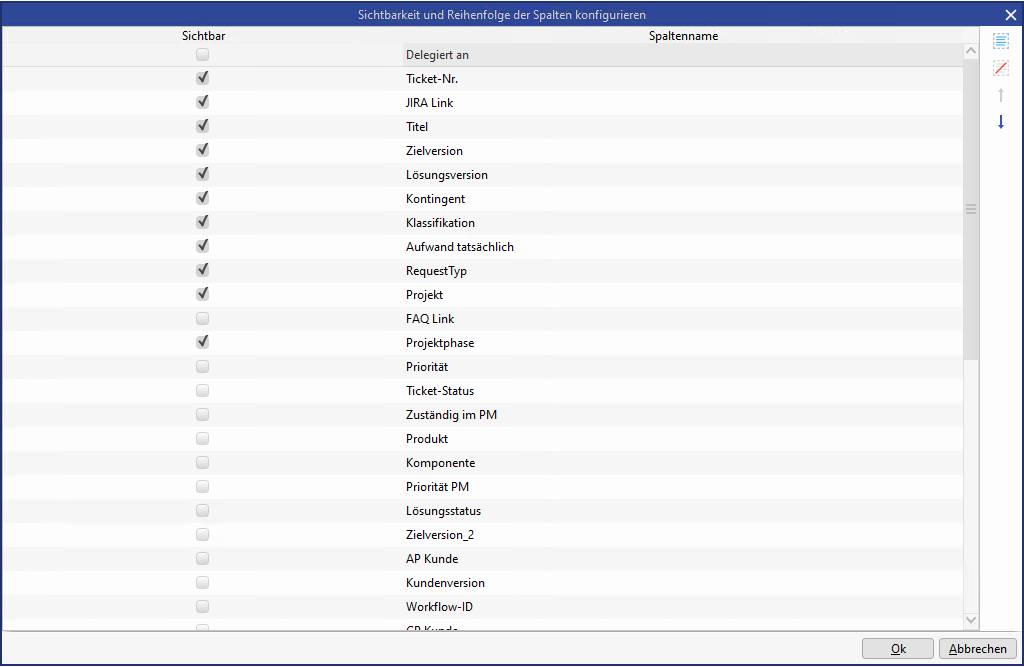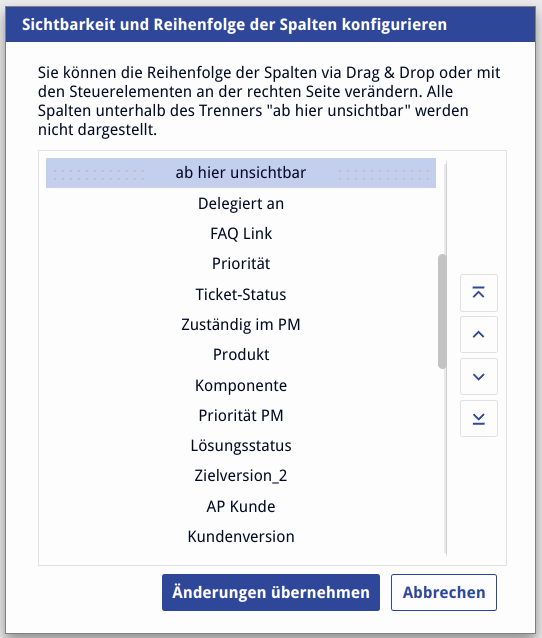Exporting datasets in Web Client


Basics
The CURSOR-CRM offers the possibility to export datasets in csv or xlsx format (MS Excel). Two technical solutions are at your disposal that depend on the amount of datasets to be exported:
The client-side export, with less than 10,000 datasets to be exported
The server-side export with more than 10,000 datasets to be exported
The output of more than 10,000 datasets is restricted by the capacity limitation of the client and is thus only available as server solution.
For the server-side export, two modules are required: Mass data server and single letter server, which must be enabled.
Client-side export (<10,000 datasets)
By clicking the export button in the drop-down menu once 
To export the table as an Excel file:
Select the rows of a table to be exported.
Click the dropdown menu button
Select the desired format from the drop-down menu (XLS or CSV).
Excel starts and opens the exported file.
Notes on the data format
The "Data export" button in the search window exports the data as it is displayed in the search result list. The goal is to have the same columns in the CSV file in the same order as they are presented to the user in the search window. Likewise, the display of the values in the CSV file and the search result list is identical. Key fields and lookup fields are displayed in one column (just like the search result list). If a detailed display of just lookup fields is necessary, these fields can be included in the search result list by means of "has a / not has a" branches.
Operating notes
Column selection and order
Using the pop-up menu in the table view, the visibility and order of the columns in the table can be configured.

Column configuration in the Windows Client

Column configuration in the Web Client
In the case of the Windows client, the order of the columns can also be made temporarily in the interface using drag and drop. When the data export is executed, this change is taken into account.
The changed layout of the table now affects the data export.
Column selection:
Transfer from column configuration + all additional fields from search of type "Output in search result and lists". The additional fields are output according to their order in the search.
A difference of fields between search and column configuration is always present if the search in the search mask has not yet been executed. After a search has been executed, this is no longer the case unless the search is changed.
Column order:
Transfer from column configurationConsideration of the display of the lookup fields (configurable per field properties "Show key field in tabular view and navigator view" and "Show description in tabular view and in navigator view")
The following functionalities are not supported:
The sorting of the data (descending/ascending) is not taken into account
Consequently, the sorting of the data in Excel must be done manually quite simply
In case of data export from the sub area, relation-specific attributes are not taken into account.
Example: The activities below a contact person are opened. In the sub area, the relation-specific attribute "Relation contact person" (RelationTypeKeyCoPe.Activity) is also selected. In case of data export this field is not selected automatically.
Workaround: Here the user would have to include this field in the search. Subsequently, the field would also appear in the data export at the correct position (same as the sub area)The field property "Amount of decimal places in display" for numeric fields is not taken into account during CSV export. All available decimal places are always output
Field contents with zero values are replaced according to the system-wide export format. In the default case, this is replaced by the text "null". The system owner can configure this by overwriting the export format - e.g. replacing it with an empty value.
Server-side export (>10,000 datasets)
The server-side export solves the problem of client-side dataset limitations. Another advantage is that users can adapt the search on runtime individually and thus can control the amount of output data this way.
This is how you export mass data to Excel:
Select an entity in the navigation area. A search dialog for the standard search is opened.
Select a search from the search management by clicking on

and adjust them if necessary.
With a click on

Execute search to start the search. If the search delivers several thousand search results, you are prompted in the dialog to start the data export.
ORIf you want to export the datasets directly to Excel, click on

Data export. Data is sent to mass data server for further processing.Tipp
Click on the icon Determine data volume to display the actual number of datasets.
If the Excel file was generated, you will be informed in the quick start bar by the icon

Completed system jobs.
Switch to the Completed system jobs level and open or download the generated Excel file.
Simplified editing of a generated Excel file
When using the Excel templates in NATIVE mode, a file can be opened for editing with or without wizards.
Requirements for operation without wizard:
In the Excel template, no retransfer is configured
The option "Show search window and selection dialog" (CONF_SEARCHDIALOG) in the Excel template contains the value NONE or NO
The configuration parameter CONF_APPL_AVOID_INSTANT_OPEN is set to "No" by default, so the new behavior for Excel templates (= reduction of steps in the wizard) takes effect by default
In the user preferences in the Integration area, select the "Open document set after import" option with the value "Without wizard - only link with dataset"
If the requirements are given, both the generated Excel file and the associated document dataset are opened for editing directly from the task list.

Figure: Generated Excel file that can be opened without wizard
The following actions are available here:
Edit Excel file
The document dataset is opened in a new level and the generated Excel file is opened directly.
Purpose: Editing of the Excel file by the user is desired.Remove from list
The Excel file was also generated and created as a document dataset in CRM. However, the document will not be opened. Instead, the entry is removed from the task list.
Purpose: Editing of the Excel file by the user is not necessary.
If the above requirements are given, direct opening of the generated Excel file is automatically offered in the task list entry. It is therefore not necessary for the customer to adapt the templates.
If it is nevertheless desired to continue using the wizard in individual cases, this can be controlled by the additional configuration parameter "CONF_APPL_AVOID_INSTANT_OPEN" in the Excel template.


